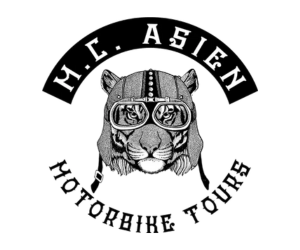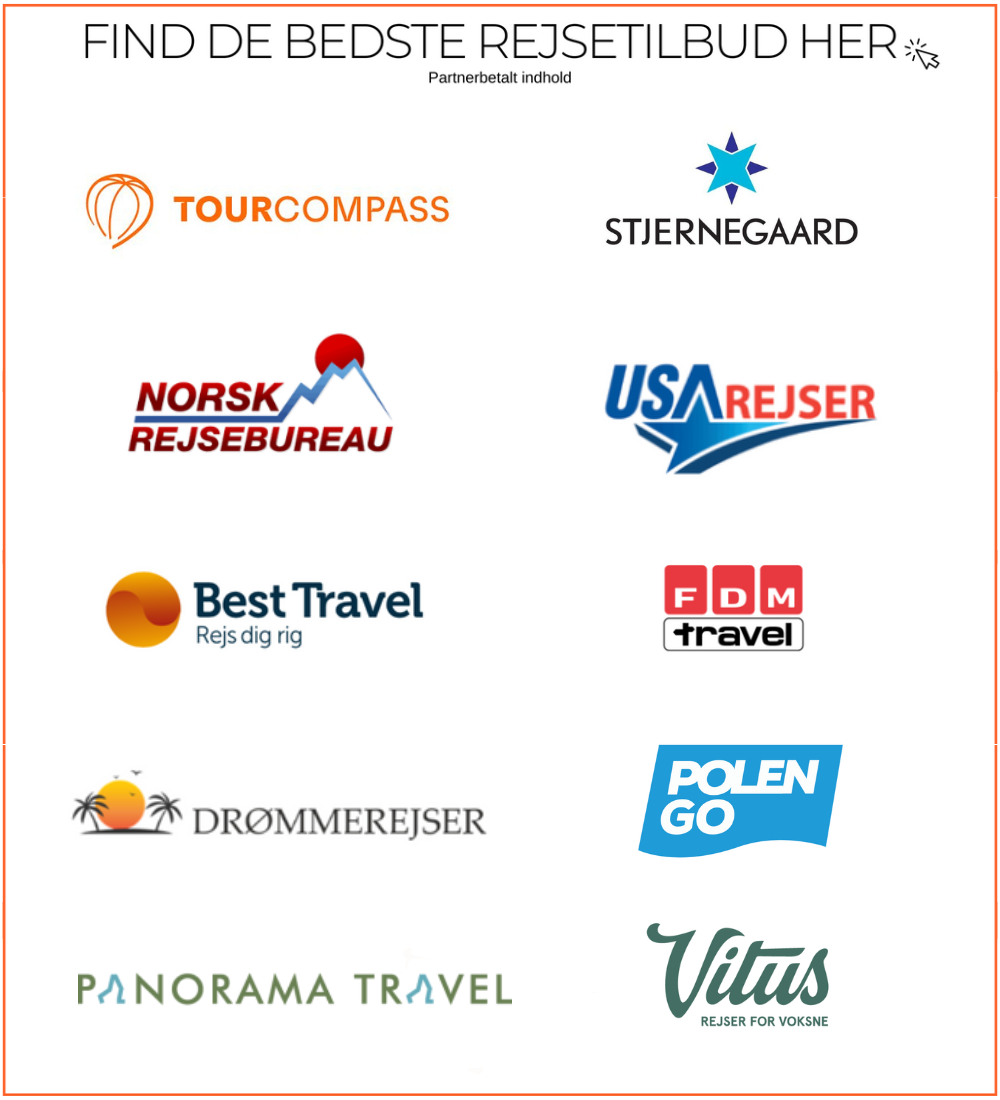Piedmont in Italy: 5 highlights from Barolo to mountain villages is written by Jacob Gowland Jørgensen.

Piedmont is everything you know - and a lot of unknown corners
Italy is an unusually long country, and right up in the corner towards Switzerland og France lies a region that few have visited, but many have tasted.
Because it is here in Piedmont that the world-famous bottles of Barolo, Moscato d'Asti and Barbaresco have their home, and where the black truffle thrives. And yes, this is also where Nutella was invented!
I've been to Italy quite a few times, but never to Piedmont, so it was time to see what this rather unique area could do.
Here are my tips for 5 highlights in Piedmont; primarily in the southern areas of Langhe, Monferrato and Roero.
Neive: Picnic with Piedmont delicacies
I sit for a while and pinch my arm.
It's been a short time since I left Milan airport, drove through the rice fields, and now I'm sitting here. To one picnic with local Piedmont delicacies overlooking the vineyards. We are at the village of Neive, in southern Piedmont.
It is warm without being hot here in the middle of June.
The enthusiastic chef Diego talks about the 5 small dishes that are in the box; everything from sweets to 'vitello tonnato', which like many other gastronomic inventions in this area has become world famous. Veal with tuna almost sounds like a bad day in the kitchen, but the Italian food traditions are solid, and it's really delicious.
The chef, who turns out to be a former TV chef, proudly displays his dishes, which of course taste really good. His sweet wife serves, and a cozy atmosphere spreads.
Finally Piedmont. Now I am here. And that's good. The dream of Italy seems right here.
In the evening we spend the night in Montelupo Albese. The city of the mountain floor.
We live in what is probably called a tourist class hotel in a somewhat boring room, but it is very beautifully located with a view of vineyards and villages, and when there is also a pool, everything is good.
Barbaresco: The classic Piedmont
I stand looking out over a river that meanders through a beautiful landscape.
We have landed right in the middle of the best wine country, namely in Barbaresco, where we taste the golden drops up in the local tower while enjoying the view.
From here we can see cities that will make any wine lover's heart beat a little faster.
Asti, world-renowned for its bubbly wines. Barolo, which is also world-renowned for the powerful red wines from the Nebbiolo grape. And of course Barbaresco itself, which always delivers delicious red drops.
Barbaresco is a tiny, pretty village, so there isn't much here apart from a small main street.
But now we are in a region where people are more than usually good at food and drink, so of course there is a small stall where you can buy black truffles and local sausages, and then there is one of the well-known wine houses right here, Gaja Wines, right here on the main street.
Piedmont has an entire festival dedicated to the truffle, the Fiera Internazionale del Tartufo Bianco d'Alba, so if you're into the wild mushroom, this is the place. Just remember that truffles are sold for up to DKK 10.000 per kilo, so it's not a cheap treat.
Wine and cycling – Barolo in Piedmont
I'm just sitting there beating my own personal record at Cascina Meriame, an open vineyard in the middle of Barolo.
I guess I have never before managed to say yes to a wine tasting at 10.30 in the morning. But then, now we're here, and I'm not going out for a drive. On the other hand, I have to go out and cycle afterwards, so it will be tiny tastings of a number of really different wines.
Italians love la dolce vita, the sweet life. Here in Piedmont, they are good at making it easy to become part of it.
You can often stay at the wineries or just drive in and see what they have to offer. They also produce all sorts of edible delights, and it's all for sharing and enjoying.
With a little buzz in our heads, we find the e-bikes, say thank you for the taste and roll up the hill to new adventures.
It was a wise choice to choose an electric bike, because the hills around Barolo are long and there is nothing that is flat. We have found a route of just over 30 kilometres, where we also enter the village of Barolo itself.
Barolo turns out to be a really cozy little town. It is also quite well visited, but it seems that there is still plenty of space.
We visit their wine museum WiMu, because of course they have a wine museum in Barolo.
It is possibly one of the most unconventional museums I have been to, because here the story of wine is told in new ways. It's probably not for everyone, but it's certainly not boring.
It's great to get out of the car and feel the country air on the bike. And make no mistake: riding an electric bike in Barolo still requires some of your legs, so you'll also burn off some calories that can be conveniently consumed again at the local restaurants.
It's pure win-win in Piedmont.
With Mamma in the kitchen in the Stura valley
Mamma Sandra smiles, takes the newly formed crouzet pasta and proudly shows it to the other mothers in the kitchen: "Look, he could!"
We are taken up Alps to the wild Stura Valley, which is perfect for those who love to be active on holiday. But before we go out and experience nature, we come into the hands of 6 local mums who have come together because they have a fondness for the special pasta type crouzet. It is found only in this region and is made by hand.
They run some small workshops where you learn how to make them, and I have to say that it was a great experience.
I felt a certain pressure of expectation, having to make pasta for the first time in my life in front of some ultimate pasta experts, but the ladies were more than usual nice and good to learn from. Well, yes, and I was really good at it, so Mamma Sandra's eyes lit up with joy when I made a whole plate of crouzet.
And why the cruise? They look a bit like a small ear and are formed by kneading a tiny bit of dough over a cutting board and then flipping it around. And they are fantastic because they are good at holding large amounts of sauce, and that is always a great quality of food.
Ask the local tourist office about the possibilities if you want to experience the real Italian food tradition from the front row in a kitchen, because there are often good opportunities to participate in 'cooking classes'.
After the tour in the kitchen, we hiked along the Stura River, where you can go kayaking and also rafting. Now the weather was on the fresh side, so it was the hike that was well signposted. There is also a huge castle in the area, Forte Vinadio, which was used right up until the Second World War and which is worth a visit.
Before we got up into the mountains, we visited the town of Bra, which is the largest local town. It is not particularly touristy, but is known for it, among other things slow food-movement that celebrates local ingredients and time for cooking. The local specialty is the Bra sausage, which can be eaten raw, although there is also pig in it, but I preferred it now fried.
All in all, the food in Piedmont is unique. Having traveled to some of the less visited regions of Italy over the past 5 years, it strikes me how diverse the local cuisines are.
Piedmont is a mountain and border region, and therefore there is an extra focus on rustic food that satisfies, and it is also influenced by French cuisine, for example with their local cheeses.
I am a fan.
Pietraporzio and Valle Maira: Mountain villages at their best
I look at the mountains from the balcony of my room. It's cool here in the morning air, but the view wins over the temperature, and I suck the clear mountain air into my lungs.
We stay at the cozy alpine hotel with the appropriate name Albergo Regina della Alpi, the Queen of the Alps. Here we get, among other things, crouzet pasta, and the dinner we get here is probably one of the best and most local things we get on the whole trip. There is nothing fancy over the place – it's just local at its coziest.
We drive towards Valle Maira 70 kilometers away, where one eco-hotel after another lies in the mountains and offers itself.
Here, a cool mix of big-city Italians looking for peace, spa and coolness in the mountains and active travelers who want to go out and test the hiking boots in the mountains.
It's classic alpine tourism, and it's both beautiful and fantastic to get down to gear after a few intensive days.
We go on a trip to Manta, Dronero and Saluzzo, which are known, among other things, for having some spectacular cycling routes - and of course in Piedmont: For their food and joy of wine.
The weather is not for the planned cycling trip, so we ask the tourist office what else there is.
We get to see the castle in Manta, a traditional flour mill in Dronero and the cozy town center in Saluzzo, where I shop for local dried sausages at the food market and have a nice lunch at Casa Del Pellico, one of the city's best restaurants.
Yum.
Piedmont is more than wine, food and mountains
The big city of Turin is also here in Piedmont, but in addition there is a long distance between the cities and plenty of nature.
It also leaves its mark on the people who live here. Fashion shows in Milan and mass tourism are very far away Venice.
It has not always been easy to live in what was once a poor mountain region, and we meet many people who enjoy living out in nature and who proudly show off their homes, products and nature. You sense a certain tranquility that is wonderful to experience when you come as a visitor.
And the Italians are – as always – really good hosts.
Good trip to Nieve, Barbaresco, Barolo, Stura, Pietraporzio and Valle Maira.
Good trip to Piedmont.


Here are the places you must visit in Piedmont
- Snow
- Mont Albert
- Barbaresco
- Barolo
- good
- Stura
- Pietraporzio
- Maira Valley
- Saluzzo
- Dronero





















































































Add comment